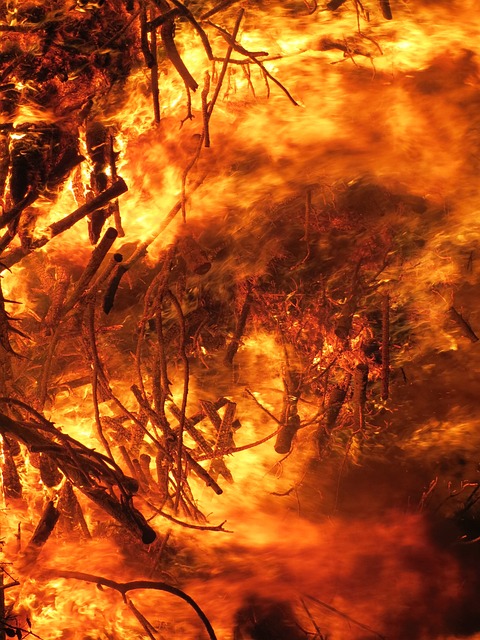House flippers in California can profit from buying, renovating, and reselling fire-damaged properties. They identify undervalued homes affected by wildfires, assess damage, adhere to local building codes, conduct efficient repairs, and maximize investment returns. While this niche presents challenges like specialized knowledge, costly repairs, and stringent regulations, successful flippers navigate these obstacles through comprehensive assessments, careful planning, marketing to specific buyer types, and financial prudence to achieve profitable flips.
House flipping, a dynamic sector within the real estate market, has seen significant growth, especially in California. This article delves into the world of house flipping specialists, exploring key aspects from understanding the basics to navigating legal and financial considerations. We dissect the unique opportunities presented by the California market, delve into fire damage as an investment opportunity (and the challenges it presents), and offer strategic insights for successful flipping. By examining these elements, prospective flippers can confidently navigate the selling of fire-damaged properties in California.
- Understanding House Flipping: A Brief Overview
- The California Market: Opportunities for Flippers
- Fire Damage as an Investment: Potential and Challenges
- Strategies for Successful Flipping of Fire-Damaged Homes
- Legal and Financial Considerations for House Flipping Specialists
Understanding House Flipping: A Brief Overview

House flipping is a real estate investment strategy where professionals purchase, renovate, and quickly resell homes for a profit. It involves identifying undervalued or damaged properties, such as selling fire damaged property California, and transforming them into desirable, market-ready residences. This process requires a keen eye for potential, strong negotiation skills, and a deep understanding of construction and design.
Flippers typically aim to maximize the return on investment by focusing on cost-effective renovations that add significant value. They navigate the complex task of assessing fire damage, understanding local building codes, and coordinating repairs efficiently. By doing so, they create opportunities to turn challenging properties into lucrative sales, especially in markets like California where there’s a consistent demand for housing.
The California Market: Opportunities for Flippers
California presents a thriving market for house flippers, offering numerous opportunities due to its diverse real estate landscape and robust economy. The state’s vast range of housing options, from coastal cities to inland communities, allows flippers to source properties tailored to various buyer preferences. Additionally, California’s steady population growth and low vacancy rates create a strong demand for housing, ensuring quick sales and potentially higher profits.
One niche area that presents unique opportunities is the market for selling fire-damaged property in California. Natural disasters like wildfires can leave behind a range of damaged homes, providing flippers with a specialized opportunity. These properties often require significant renovation but can be a great deal for buyers looking to rebuild or invest. The process involves assessing structural damage, clearing debris, and conducting thorough repairs, all while navigating local regulations and insurance claims.
Fire Damage as an Investment: Potential and Challenges
Fire damage can present a unique opportunity for house flipping specialists in California, where the market for selling fire-damaged properties has its own set of advantages and challenges. While some may view it as a setback, savvy investors see potential. Many areas in California, known for their vibrant real estate markets, also experience occasional fires, leading to an array of distressed homes. These can be acquired at potentially lower prices compared to the average market rate, offering flippers the chance to renovate and resell at a profit.
However, the challenges are significant. Restoring fire-damaged properties requires specialized knowledge and often costly repairs. Structural damage, blackened walls, and smoke odor can all impact the resale value and attract stringent building codes. Flippers must carefully assess each property’s potential, considering not just the repair costs but also the market demand for such homes. Selling fire damaged property in California demands a strategic approach, balancing the benefits of acquiring underpriced real estate with the complexities of rehabilitation and the ever-present risk of further damage or code violations.
Strategies for Successful Flipping of Fire-Damaged Homes
When it comes to flipping homes, fire-damaged properties present unique challenges but also opportunities for experienced specialists. The first step in successfully flipping a fire-damaged home is thorough assessment. Professionals need to evaluate the extent of damage caused by the fire, which may include structural integrity issues, smoke and soot contamination, and water damage from firefighting efforts. In California, where selling fire-damaged property is common due to wildfires, understanding local regulations for rebuilding and rehabilitation is crucial.
Effective strategies for flipping these homes involve meticulous planning and execution. This includes safe demolition and remediation processes to ensure a healthy living environment after the flip. Specialists may need to remove and replace structural elements, update electrical and plumbing systems, and address air quality concerns. Marketing and pricing strategies should consider the specific needs and preferences of potential buyers, who might include those looking for a restoration project or investors aiming for quick profits.
Legal and Financial Considerations for House Flipping Specialists
When it comes to house flipping in California, especially with fire-damaged properties, specialists must navigate a landscape filled with legal and financial complexities. Selling fire damaged property in California involves adhering to strict codes and regulations aimed at ensuring safety and property value restoration. Flippers need to understand local building and zoning laws, as well as specific guidelines for rehabilitating homes affected by fires. Failure to comply can result in costly delays, fines, or even the loss of the property.
Financial considerations are equally crucial. House flipping specialists must accurately assess repair costs, potential resale values, and market trends. Given that fire damage can be extensive, accurate budgeting is essential to avoid financial pitfalls. Additionally, California’s real estate market dynamics necessitate a keen understanding of taxes, insurance, and financing options. These factors collectively impact the overall profitability of flipping ventures, particularly when dealing with unique circumstances like selling fire damaged property.
House flipping, particularly in California’s dynamic real estate market, presents a unique opportunity for investors. As seen with fire-damaged properties, understanding specific challenges and implementing strategic approaches can yield significant returns. By navigating the legal and financial aspects carefully, specialists can capitalize on the demand for selling fire damaged property in California, contributing to a vibrant local landscape while enhancing their own portfolios.






